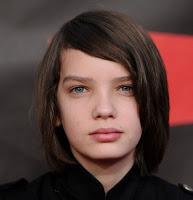 I recently updated my response to Charlotte Perkins Gilman's Herland along with new chapters. The original version was intended as a response to the problem of utopias. They are so attractive on the one hand, yet so entirely problematic on the other--especially since they always seem to depend on the constant grinding work of invisible people behind the scenes.
I recently updated my response to Charlotte Perkins Gilman's Herland along with new chapters. The original version was intended as a response to the problem of utopias. They are so attractive on the one hand, yet so entirely problematic on the other--especially since they always seem to depend on the constant grinding work of invisible people behind the scenes.As so often happens with a text, the problem of the main character, Alim, rather took over. What makes him a "him"? Nurture? Nature in the genetic (inherited) sense? Or biological sense? Or evolutionary sense? How much of his personality is a "him" and how much of it is specific to Alim as Alim (as opposed to Bob or Gary or Charlotte)?
 I don't try to answer all those questions--quite frankly, I don't think I can. But they are out there.
I don't try to answer all those questions--quite frankly, I don't think I can. But they are out there. 
The pictures indicate how much a young male can change between the ages of 15 and 21. So human development also plays a role.
His in Herland by Katherine Woodbury can be found here.